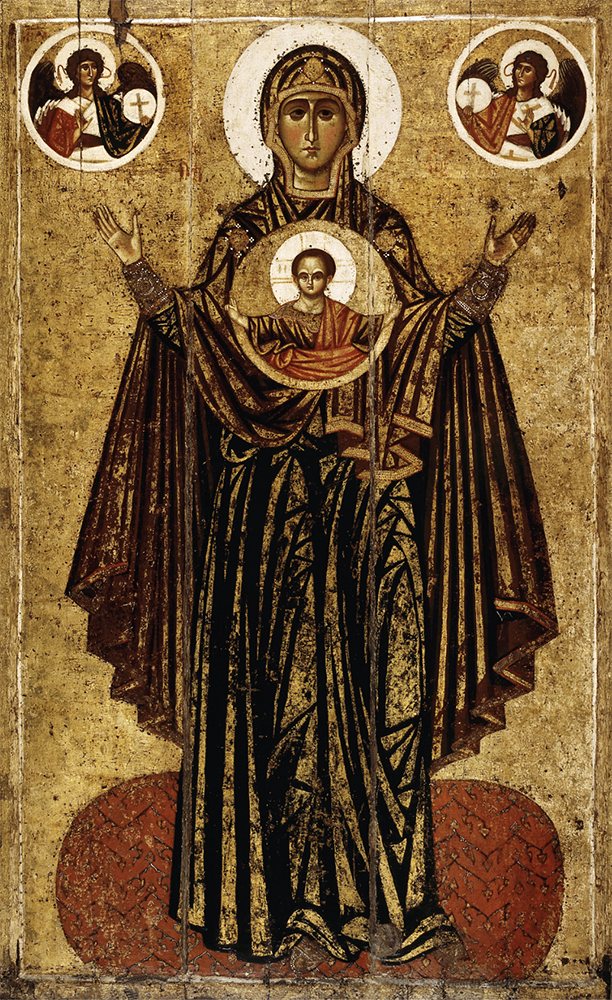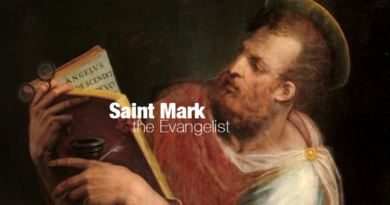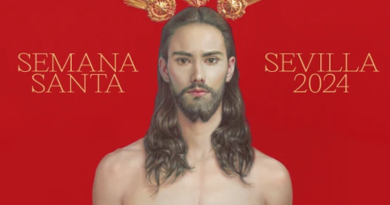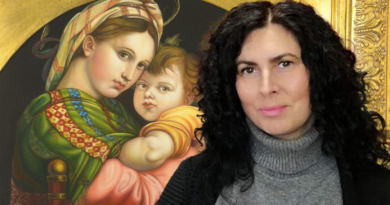How To Read Symbols In Orthodox Icons
The Orthodox iconography is a figurative mistery. And this mistery is not just in the stylized depiction of the saints but in the symbolism of every detail of an icon. Each detail in an Orthodox icon has its very special meaning. Let’s look at some elements of the iconology of an icon.
Colors
| WHITE | The white color is a symbol of purity, Divine light, holiness. |
| GOLDEN/ YELLOW | The golden or yellow colors are the colors of Divine Glory, the sun and the proclamation of joy. |
| PURPLE | The purple color is considered a royal color, it symbolizes God as the King of Heaven. This color is also present in the clothes of the Mother of God – the Queen of Heaven. |
| RED | Red color is a symbol of faith and the Resurrection. But also it’s a color of blood, torture, suffering and fire. Martyrs are depicted in red robes, and the wings of six-winged seraphim, the highest angels close to God, burn with red fire. Did you know that “seraphim” is translated from Hebrew means “fiery” because it was in the guise of fiery figures that they appeared to the prophet Isaiah. |
| BLUE | Light blue and dark blue represent the sky. The blue is also the color of Mother of God, because Mother of God unites the earthly and heavenly in herself. |
| GREEN | Green is the color of life, nature, hope, renewal, and a symbol of the Holy Spirit. |
| BROWN | Brown color is a symbol of earth, dust, decay. When you see this color in an Orthodox icon it means that that character is either dead or is about to die. |
| BLACK | Black is the color of evil, death, the abyss of hell. |
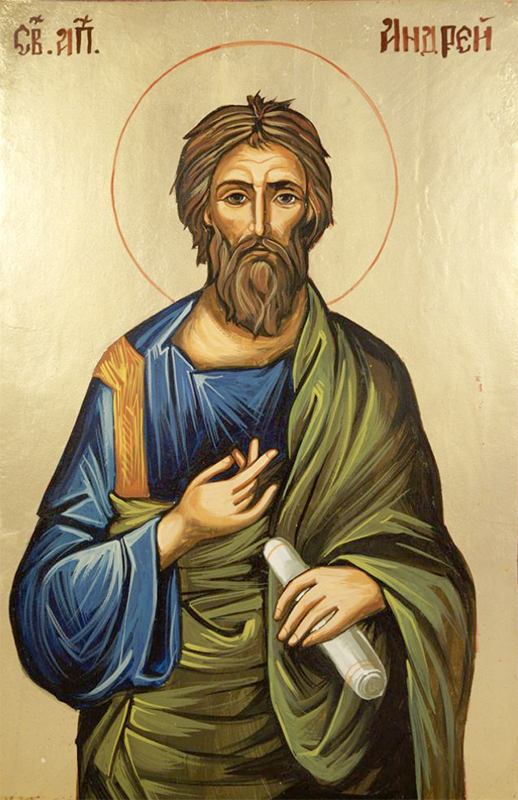
Symbols of Holiness
| HALO | A halo above the head in the shape of a circle means the radiance of Divine light which transforms a person who unites with God. ONLY the Savior’s halo contains a cross – it’s called “crossed halo”. |
| CROSS | The cross in the halo indicates Jesus’ sacrifice on the cross. |
| MANDORLA | Mandorla is an almond-shaped radiance which is depicted on the icons of Christ and the Mother of God to show their glory. |
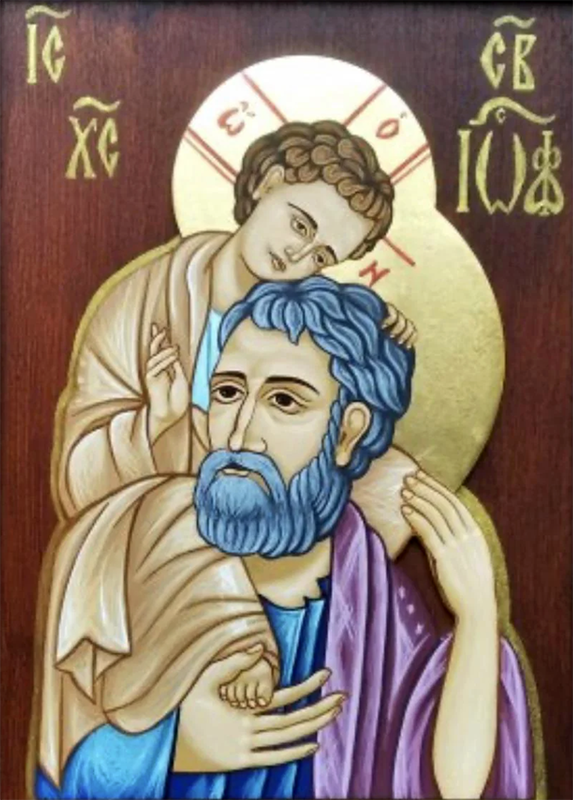
Other symbols
A dove holding a branch in its mouth is a symbol of peace and God’s mercy.
A mountain personifies the spiritual and moral ascent of man.
Thunder arrows signify the wrath of God.
A house is a symbol of spiritual dispensation, also the man-made world, the church, the abodes of Paradise, and creation.
An oak symbolizes the tree of life.
The golden crown is a symbol of spiritual victory.
A book with which the saints are depicted is the Gospel – the Book of Life.
A spear in the hands of a saint means victory over dark forces.
A ladder is a symbol of spiritual ascent and aspiration to God.
A cave depicted in black colors often symbolizes the underworld.
The pointing finger of the right hand descending from heaven is Divine providence.
An angel’s staff is a symbol of a heavenly messenger.
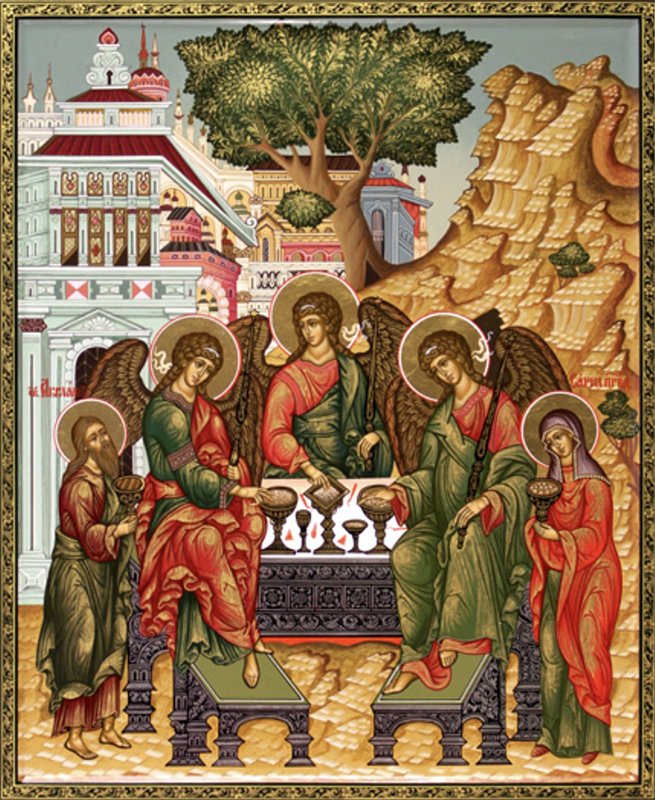
Clothes, folds & hands
Clothes
The clothes of a saint emphasize the status of the one depicted. The mantle is an attribute of princes and kings, the cloak is an attribute of warriors, the miter (headdress of bishops) and the omophorion (a long wide ribbon decorated with crosses) are an attribute of saints, the hood (monastic cap) and monastic mantle indicate that the saint depicted was a monk. Most often, among saints, we can see a tunic (underwear in the form of a shirt to the toes) and himation (outer clothing in the form of a cloak).
Folds
Folds in a robe are a very important detail. It is by the nature of the arrangement of the folds that one can understand which century a particular icon belongs to. In the 8th–14th centuries folds were depicted as small and frequent. This indicates spiritual experiences and a lack of spiritual peace among the Orthodox of that time. Starting from the 15th–16th centuries folds are drawn straight, long, and sparse. They symbolize spiritual strength and the desire to strengthen faith.
Hand gestures
A hand pressed to the chest means heartfelt empathy.
A hand raised up is a call to repentance.
A hand extended forward with an open palm is a sign of obedience and submission.
Two hands raised forward – prayer.
The palm open towards the person looking at the icon is a symbol of the righteous. A sign of a person who is open to the world and whose thoughts are pure. Sometimes we see both palms open on the icon. Historians of icon painting interpret this gesture in different ways. The first version is that both palms show us that the saint in the icon receives the grace of God. And the second version is that the person depicted turns to God in prayer.
